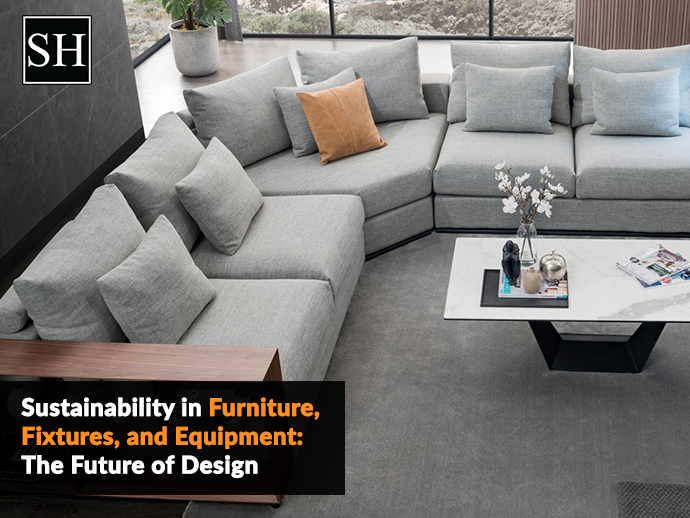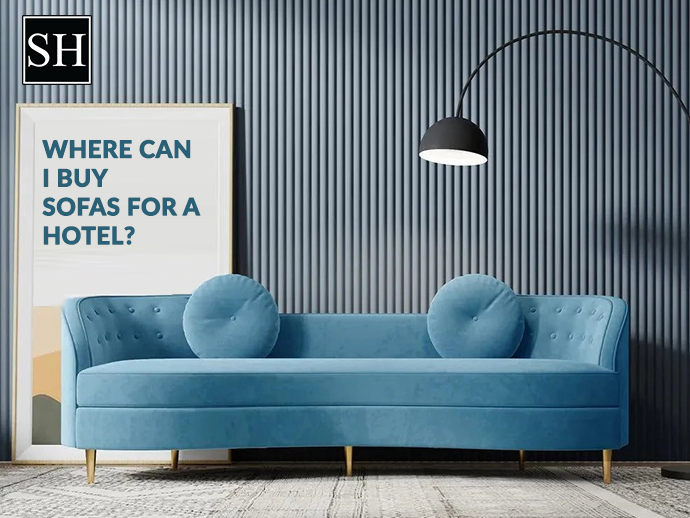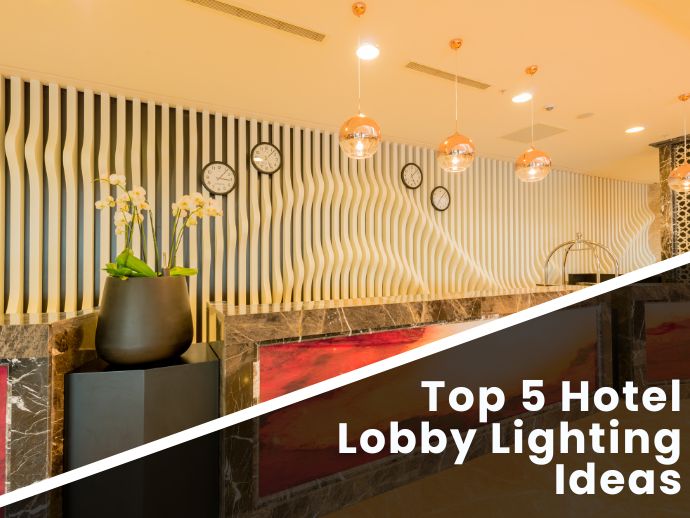
Sustainability in Furniture, Fixtures, and Equipment: The Future of Design
In present times, customers are prioritizing sustainability, and hospitality design is undergoing a shift. It includes incorporating furniture, fixtures, and equipment to show a commitment to environmental protection and awareness. Sustainability in hospitality furniture, fixtures, and equipment is crucial in design.
As main concerns about climate change and environmental impact grow, resource reduction and manufacturers recognize the need to adopt more sustainable practices throughout the whole lifecycle of FF&E products. It includes sourcing materials, product durability, manufacturing processes, and end - of life disposal. In this blog, we discover furniture, fixtures, and equipment sustainability.
What is Sustainable Furniture?
Sustainable furniture includes eco-friendly materials, design principles, and production approaches to building furnishing, reducing environmental impact, and promoting healthy living space. As sustainability awareness among people grows and the demand for this type of furniture is high, it reshapes the industry. It offers customers greener options for their residential and commercial space.
Key Aspects Shape the Future of Sustainable Design in FF&E
Below are some key aspects and trends which shape the future of sustainable design in FF&E:
1. Lifecycle Assessment
Considering the whole lifecycle of FF&E products is essential for sustainable design. It includes an evaluation of the environmental impact of raw material extraction, product use, manufacturing process, and end-of-life disposal. Life cycle assessment tools will enable designers to make informed decisions to reduce environmental harm.
2. Material Selection
Sustainable hospitality furniture design starts with conscious material choices. The designers are choosing eco-friendly materials like reclaimed wood, recycled metals, bio-based composites, and bamboo. These materials have a lower environmental footprint and can often be recycled or upcycled.
3. Energy Efficiency
The designers are including energy-efficient features in FF&E products. For instance, lighting fixtures will use LED technology, and intelligent systems will optimize energy usage. Also, renewable energy sources like solar and wind are being integrated into manufacturing.
4. Minimalism and Multi-Functionality
Embracing minimalism and multi-functionality in hotel FF&E installers will reduce material consumption and space optimization. Creative designs that serve multiple purposes or adapt to changing needs help minimize the need for excess furniture and equipment.
5. Circular Economy
The concept of a circular economy is gaining traction in the FF&E industry. Instead of the traditional linear "take-make-dispose" model, a circular economy aims to keep resources in use for as long as possible. This involves designing products for durability, repairability, and modularity and implementing take-back and recycling programs to minimize waste.
6. Local Sourcing and Production
By sourcing materials locally and manufacturing products nearby, designers can reduce the carbon footprint associated with transportation. Local sourcing also supports regional economies and reduces reliance on global supply chains.
7. Consumer Education
Raising awareness and educating consumers about the importance of sustainable FF&E is vital. Designers can provide information on the materials used, manufacturing processes, and the environmental benefits of sustainable choices. Empowering consumers to make informed decisions can drive demand for sustainable products and encourage industry-wide change.
8. Collaboration and Certification
Collaboration among designers, manufacturers, and industry organizations is essential for advancing sustainable FF&E design. Various certifications, such as LEED (Leadership in Energy and Environmental Design), FSC (Forest Stewardship Council), and Cradle to Cradle, provide standards and guidelines for sustainable practices. Adhering to these certifications can help ensure transparency and credibility.
Conclusion
The future of FF&E design lies in integrating sustainability as a core principle. By adopting sustainable practices, designers and manufacturers can create products that are not only visually appealing and functional but also environmentally responsible, contributing to a more sustainable and resilient future. The hospitality FF&E companies will prioritize sustainability in design and production. The companies will not reduce their environmental impact.
-

Where Can I Buy Sofas For A Hotel?
-

How to Increase Revenue in a Hotel?
-

How to Keep Hospitality Furniture in Great Shape
-

What is the Most Important Element of Creating a Hotel with Soul
-

Top 5 Hotel Lobby Lighting Ideas to Upgrade Guest Experience
-

What is the Hospitality Industry? Complete Guide
